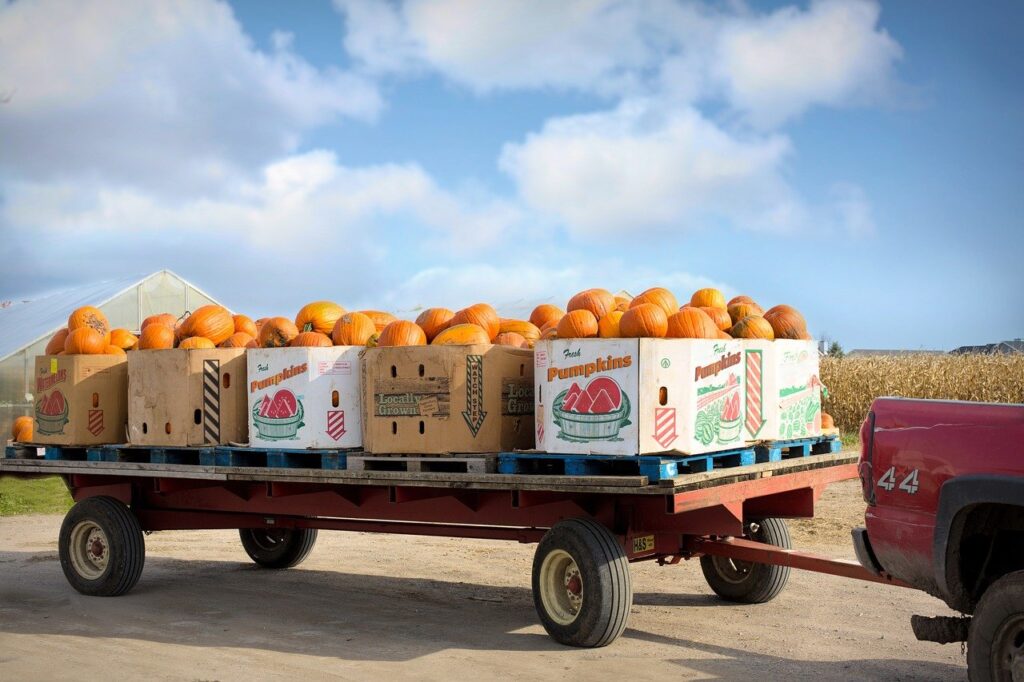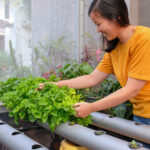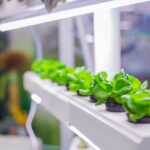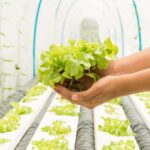Growing pumpkins at home can be a rewarding experience, offering both a fun gardening project and the joy of harvesting your own Halloween decorations or fresh ingredients for pies. Here’s a step-by-step guide to help you successfully grow pumpkins in your own backyard.
Selecting the Right Pumpkin Variety
Pumpkins come in various shapes, sizes, and colors. When choosing a variety to grow, consider your space and purpose. Common varieties include:
Jack-o’-lantern: Ideal for carving.
Sugar pumpkins: Perfect for cooking and baking.
Miniature pumpkins: Great for ornamental purposes and small spaces.
Giant pumpkins: For those looking to grow record-breaking pumpkins.
Preparing the Soil
Pumpkins thrive in well-drained, nutrient-rich soil with a pH between 6.0 and 6.8. Here’s how to prepare your soil:
Location: Choose a sunny spot with at least 6-8 hours of direct sunlight.
Soil Preparation: Work in plenty of organic matter like compost or well-rotted manure to enrich the soil.
Mounds or Hills: Create small mounds or hills about 3-4 feet apart. These improve drainage and provide warmth for the roots.
Planting the Seeds
The best time to plant pumpkin seeds is after the last frost date in your area. Here’s a step-by-step planting guide:
Sowing Seeds: Plant seeds 1 inch deep in the mounds, spacing them about 6 inches apart.
Watering: Keep the soil moist but not waterlogged. Consistent watering is crucial for seed germination.
Thinning: Once seedlings have a few true leaves, thin them to 2-3 plants per mound to ensure adequate space for growth.
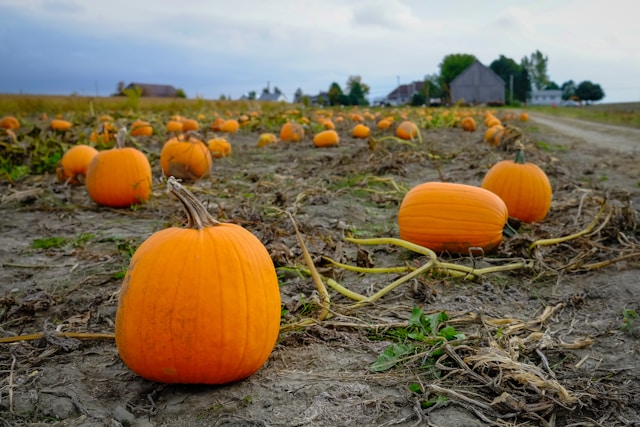
Caring for Pumpkin Plants
Pumpkins need consistent care to thrive. Here are essential care tips:
Watering: Water deeply and regularly, especially during dry spells. Aim for about 1 inch of water per week.
Mulching: Apply mulch around the plants to retain moisture, suppress weeds, and keep the soil temperature stable.
Fertilizing: Use a balanced fertilizer when the plants are about a foot tall. Switch to a high-phosphorus fertilizer when flowers appear to encourage fruit development.
Pest Control: Watch out for common pests like squash bugs and vine borers. Use row covers or organic pesticides if needed.
Pollination
Pumpkins have separate male and female flowers. Bees and other pollinators are essential for transferring pollen from the male to the female flowers. You can hand-pollinate if necessary by transferring pollen with a small brush.
Harvesting Pumpkins
Pumpkins are usually ready to harvest 75-100 days after planting, depending on the variety. Here’s how to determine if they’re ready:
Color: The pumpkin should have a deep, solid color.
Skin: The skin should be hard and resist pressure from your fingernail.
Stem: The stem should be dry and start to crack.
Use a sharp knife or pruning shears to cut the pumpkin from the vine, leaving a few inches of stem attached. Handle pumpkins carefully to avoid bruising.
Storing Pumpkins
After harvesting, cure pumpkins in a warm, dry place for about 10 days. This helps harden the skin and extend shelf life. Store cured pumpkins in a cool, dry place, where they can last for several months.
Troubleshooting Common Problems
Powdery Mildew: This fungal disease appears as white powder on leaves. Improve air circulation and apply fungicides if needed.
Fruit Rot: Ensure proper drainage and avoid watering the foliage to prevent rot.
Poor Fruit Set: Inadequate pollination can lead to poor fruit set. Encourage pollinators or hand-pollinate.
Growing pumpkins at home can be a delightful endeavor with the right preparation and care. Whether you’re aiming for a prize-winning giant or a batch of sweet sugar pumpkins, following these steps will help you enjoy a bountiful harvest.
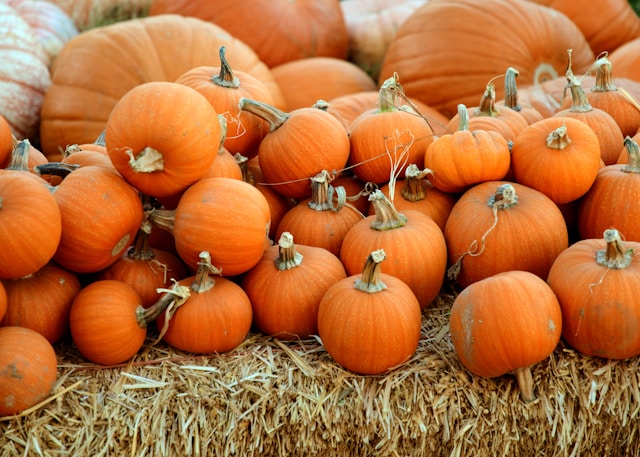
Extending the Pumpkin Season
For those looking to extend the pumpkin growing season, here are a few additional tips:
Start Indoors: In colder climates, start pumpkin seeds indoors 2-4 weeks before the last frost date. Transplant seedlings outside after the risk of frost has passed.
Row Covers: Use row covers to protect young plants from early-season cold snaps and pests. Remove the covers when flowers start to appear to allow for pollination.
Succession Planting: To have a continuous harvest, consider planting seeds in succession every 2-3 weeks.
Companion Planting
Companion planting can help improve the health and yield of your pumpkin plants. Consider planting pumpkins alongside:
Corn: Provides natural support for the sprawling vines.
Beans: Fix nitrogen in the soil, benefiting the pumpkins.
Marigolds: Help deter pests like nematodes and beetles.
Avoid planting pumpkins near potatoes, which can compete for nutrients and attract similar pests.
Creative Uses for Home-Grown Pumpkins
Once you’ve harvested your pumpkins, there are many creative ways to use them:
Cooking and Baking: Use sugar pumpkins for pies, soups, and breads. Roast pumpkin seeds for a healthy snack.
Decorating: Carve Jack-o’-lanterns for Halloween, or use miniature pumpkins for autumn décor.
Composting: If you have leftover pumpkins, compost them to enrich your garden soil for next season.
Saving Seeds for Next Year
To save seeds from your pumpkins for next year’s planting, follow these steps:
Select Healthy Pumpkins: Choose the healthiest and most vigorous pumpkins for seed saving.
Extract Seeds: Scoop out the seeds and rinse them to remove any pulp.
Dry Seeds: Spread seeds out on a paper towel and allow them to dry completely in a cool, dry place.
Store Seeds: Place dried seeds in an airtight container and store them in a cool, dark location. Label the container with the pumpkin variety and date.
Fun Facts About Pumpkins
Here are a few interesting facts to inspire your pumpkin-growing journey:
Ancient Origins: Pumpkins are believed to have originated in Central America over 7,500 years ago.
Nutritional Value: Pumpkins are rich in vitamins A and C, potassium, and fiber.
Record Breakers: The world record for the heaviest pumpkin is over 2,600 pounds!
Cultural Significance: Pumpkins play a significant role in various cultural celebrations, including Halloween and Thanksgiving.
Growing pumpkins at home is a fulfilling and enjoyable activity for gardeners of all skill levels. By selecting the right variety, preparing the soil, providing proper care, and troubleshooting common issues, you can achieve a successful pumpkin harvest. Whether you’re aiming to carve the perfect Jack-o’-lantern, bake delicious pumpkin pies, or simply enjoy the beauty of your garden, these tips will help you cultivate healthy and bountiful pumpkin plants.
